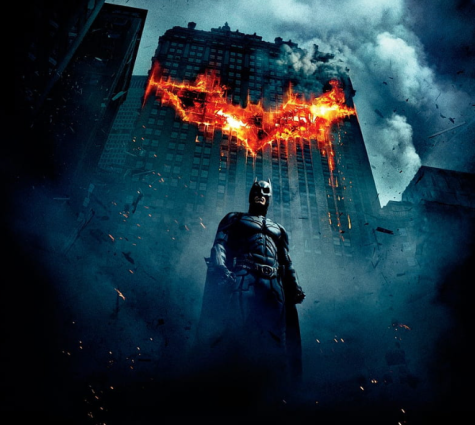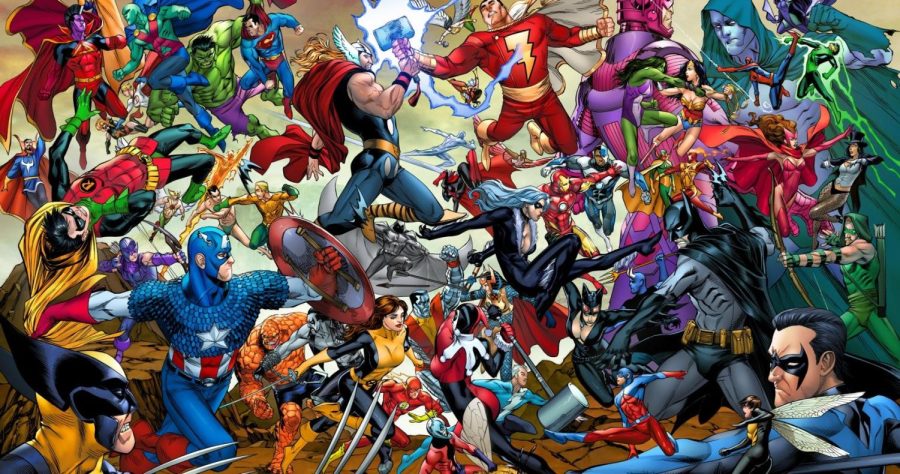DC vs. Marvel: Race to the Audience
Andrew Park ’25 compares DC Comics to Marvel Studios—how do they differ, and how did they get to where they are today?
Fun fact: DC Comics, famously known for heroes like The Batman and Superman, stands for “Detective Comics.” Each comic features characters like The Batman digging out crime in Gotham city. But despite DC Comics predating Marvel’s by two whole years, Marvel still managed to be more popular at the time following the creation of Captain America: a much more patriotic and optimistic superhero, defeating bad guys with only a shield. And while this century-old competition between these two still exists today, the different choices and styles used to convey a simple superhero narrative has set them on two separate paths of either success or failure.

When observing the DC movie franchise, one must also understand the DC comic franchise. Most notably, Batman was first created in 1939, and was designed to be dark and brooding, hence his nickname: The Dark Knight. Since Batman is one of the most popular characters in the DC multiverse, DC decided to kickstart his cinematic career in tandem with film company, The Warner Bros, to release the 2005 film: Batman Begins.
And while this film itself wasn’t a massive success, the company got a shot at redemption with the billion dollar sequel, The Dark Knight (2008). These two companies continued their legacy by releasing their next big hit, a version of the famous hero, Superman, in Man of Steel (2013). But unfortunately, DC made a big mistake with their film. DC’s muscle memory of only filming and editing dark Batman films accidentally led to them using their old methods in the new Superman film.
In the comics, Superman is optimistic, shooting laser beams from his eyes and waving to the crowd in a fanfare of trumpets. But in the case of Man of Steel, not so much. In fact, this film forgot to convey the core values of Superman, and made the entire film uneasy and unnecessarily dark. This same mistake would go on to appear in DC’s Wonder Woman and Justice League; both films advertised to be enthralling and bright, but turning out to be dark and dull. Although their storylines are somewhat cohesive, the unenthusiastic dialogue and dim lighting set these DC films apart from Marvel’s, and is what makes DC’s films less successful in comparison.

Marvel Studios by comparison is a studio that is spoiled with rave reviews and box office successes, and is essentially the polar opposite of DC Comics. Despite dabbling in a similar genre, why does Marvel have such a high success rate? Characters like Iron Man were all created in the Batman era, yet Tony Stark is the one getting all of the attention.
The most plausible reasoning is probably the tone of these films. If people are more likely to be bored in the theater, they’re probably not coming back. However, the MCU is doing a great job at attracting old and new viewers alike, by customizing the overall mood of a film solely upon its main characters and adapting to its audience.
Doctor Strange (2016) was more strange and whimsical, but Avengers: Infinity War (2018) was dramatic and exciting. All of these precise mechanisms are what makes Marvel, marvelous. After all, it’s the audience’s hype that begets the success of entertainment companies like Marvel Studios.
Although these two companies both seek to tell stories about superheroes, it seems as if the small details that go unnoticed in the filmmaking process are often the most important when it comes to a company’s popularity and success on the big screen. But between the cinematic battle between DC and Marvel, the true winners are us as audience members, getting to enjoy the fruits of their hard work.


